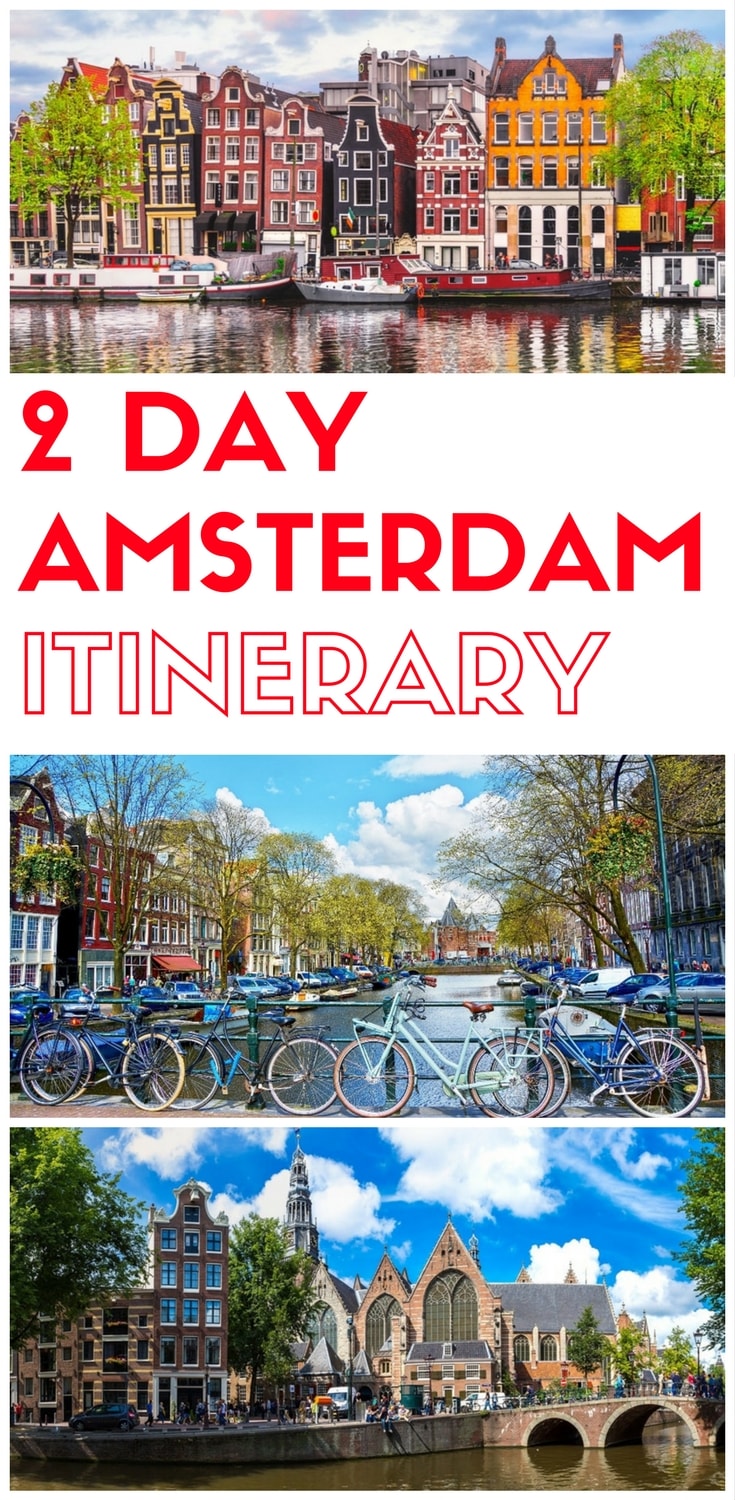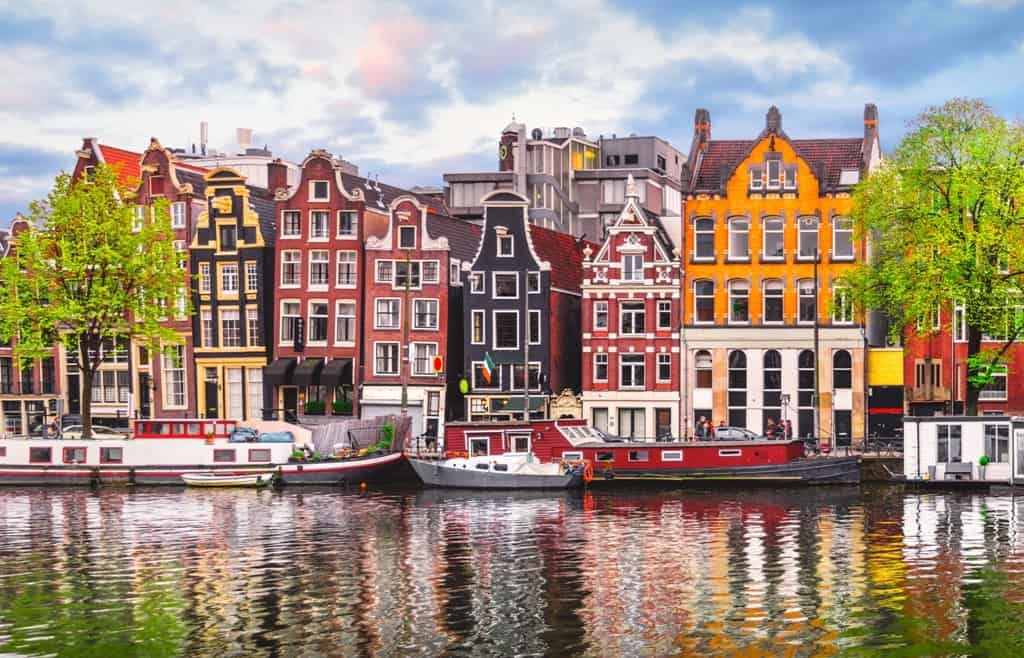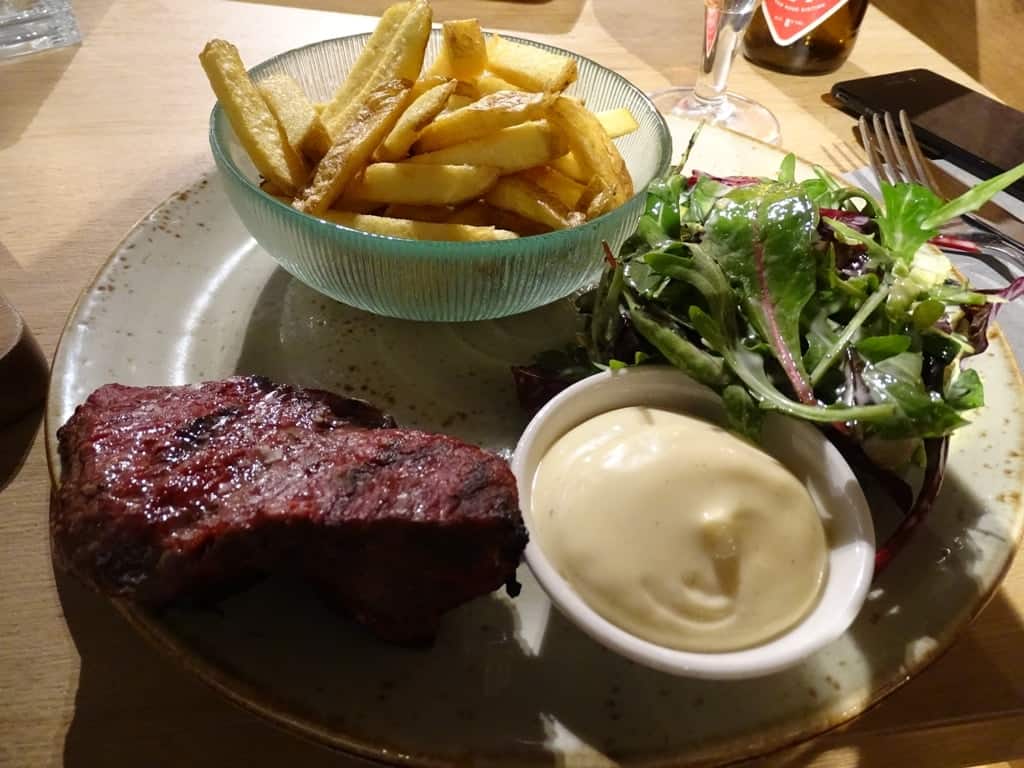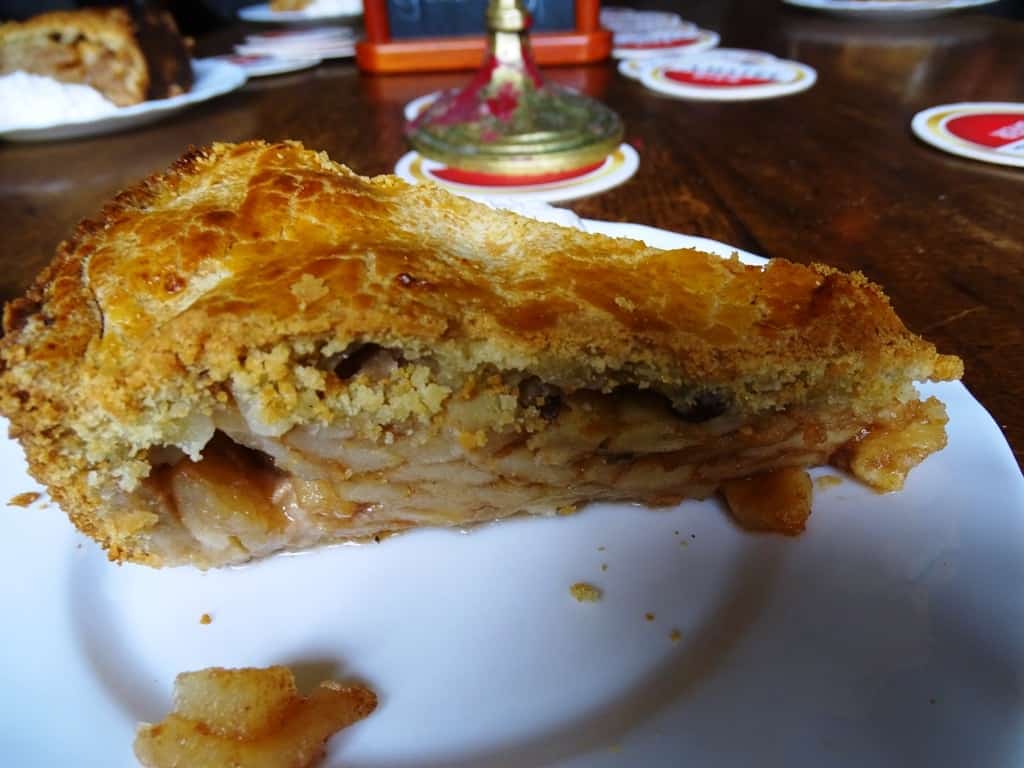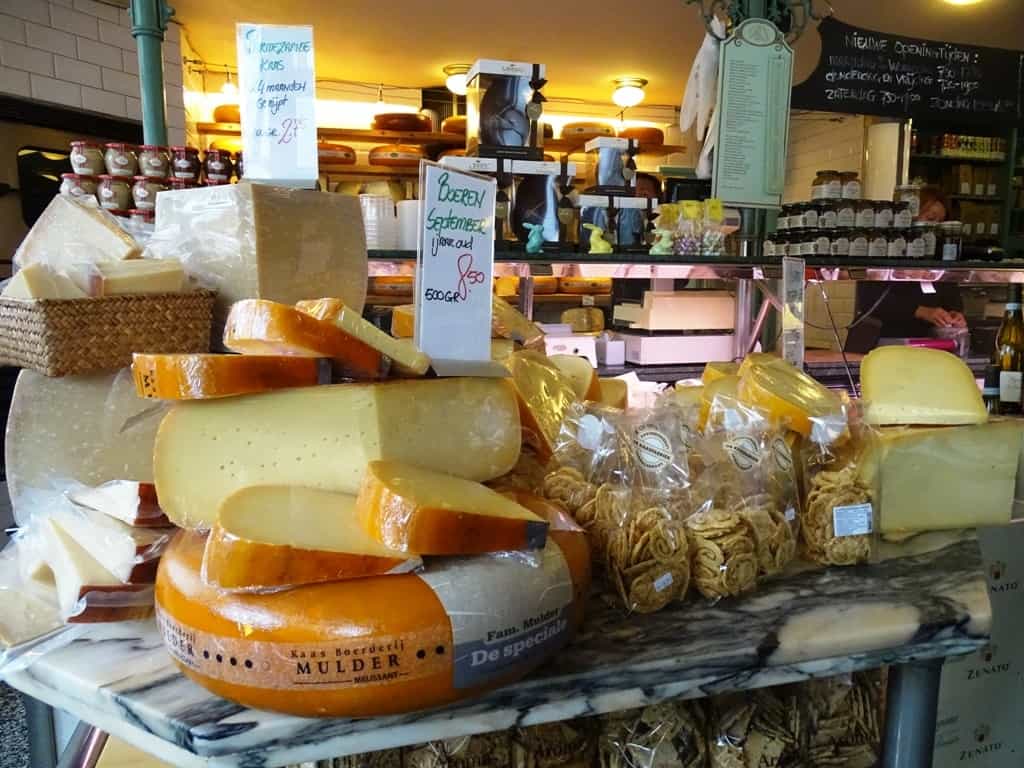Planning to visit Amsterdam for 2 days? The populated capital of the Netherlands is a much-coveted bucket-list city for those visiting Europe; it is famous worldwide for its winding canals, bike-friendly culture, and artistic heritage.
Beyond that, Amsterdam offers a full and rich cultural palette, melding a fascinating history with a modern metropolis which makes it one of the most beautiful and unique cities in Europe.
Below you will find a 2-day itinerary of the best and most loved attractions of Amsterdam, sure to satisfy even the most ardent of history and art lovers:
Disclaimer: This post contains affiliate links. This means that should you click on certain links, and then subsequently purchase a product, I will receive a small commission.
Table of Contents
Two days in Amsterdam: Where to stay?
Mövenpick Hotel Amsterdam City Centre: A 4-star luxury hotel offering river views, just 10 minutes on foot from the city center. It offers spacious rooms with free wi-fi, a minibar, satellite TV, and tea and coffee-making facilities. Other hotel amenities include a wellness center with a gym, a restaurant serving international cuisine, and a bar. Click here for more information and to check the latest prices.
Pillows Anna van den Vondel Amsterdam: Located next to the Vondelpark, the hotel has 31 rooms some with a private terrace or French balcony. Other room amenities include a TV, a minibar, tea and coffee making facilities, and free Wi-Fi. The hotel is conveniently located close to the Van Gogh Museum and Rijksmuseum. Click here for more information and to check the latest prices.
Hotel The Exchange: Situated next to Dam square this fashion hotel offers from 1 star to 5-star rooms each one uniquely decorated by students of the fashion school and Dutch designers. Breakfast is served all day at the on-site Stock cafe and Wi-Fi is free of charge. Click here for more information and to check the latest prices.
Art’otel Amsterdam: Located in the heart of the city close to the Central station, this boutique hotel offers modern rooms that feature artwork by Atelier Van Lieshout and free Wi-Fi. Other hotel facilities include an indoor swimming pool and fitness center, and an all-day cafe. Click here for more information and to check the latest prices.
How to spend 2 days in Amsterdam, A Perfect Itinerary
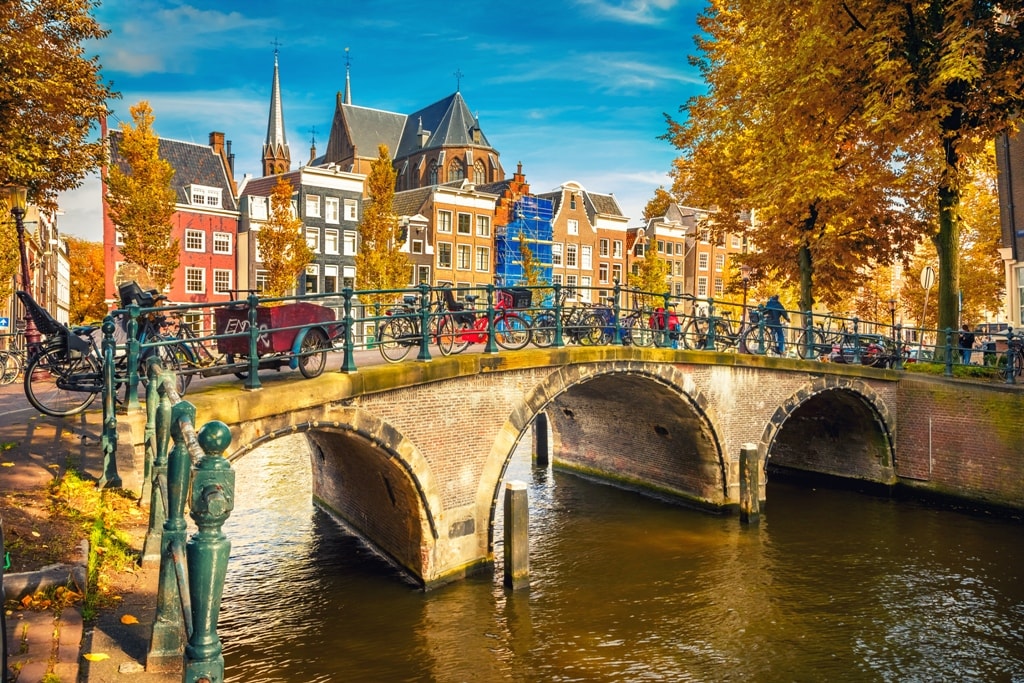
Amsterdam in 2 days: Day One
Van Gogh Museum
To see the world’s largest collection of Van Gogh artworks and one of the most popular museums in the world, a visit to this attraction is a must. It houses 200 of his paintings, 500 of his drawings, and 700 of his letters.
It is a modern and cutting-edge facility providing a thorough history of Van Gogh’s legacy and inspirations, as well as showcasing exhibitions from his colleagues like Gauguin, Malevich, and Vallotton. To skip the queue, make sure you book your tickets online to benefit from priority access.
Tip: Photography is not allowed inside the museum
Skip the line ticket to the Van Gogh Museum
Skip the line tour to the Van Gogh Museum
Rijksmuseum
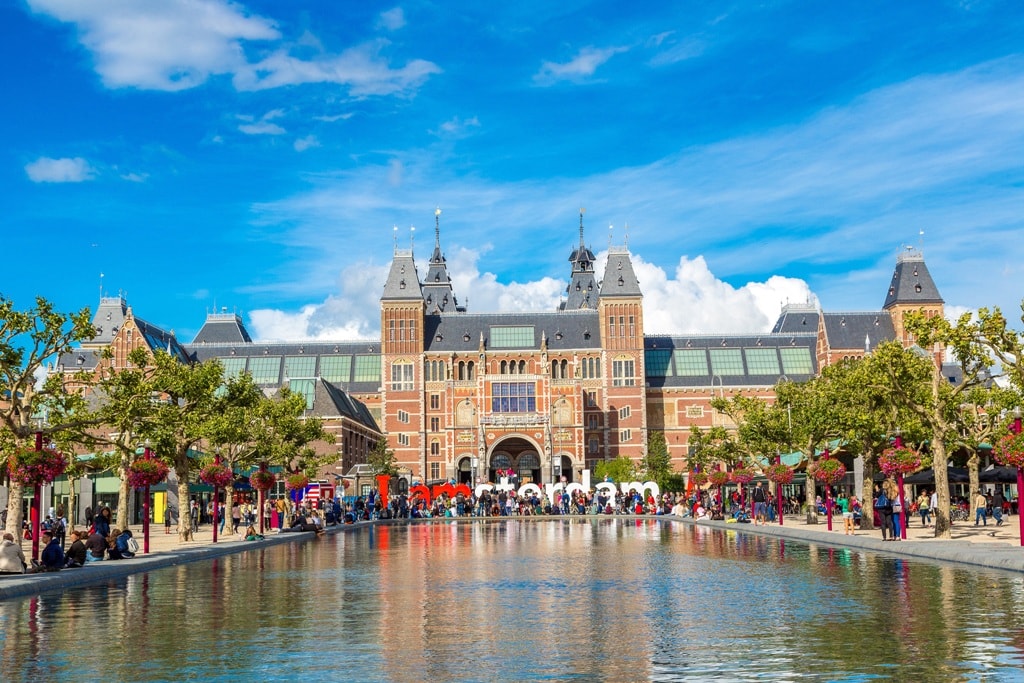
To learn about Amsterdam’s broader art and history, the Rijksmuseum is the place to go. It is situated near the Van Gogh Museum and is also one of the most famous museums in the world, attracting people from all over the globe.
Its grand and prized collection includes a wide variety of masterpieces from greats such as Rembrandt, Vermeer, and Frans as well as artifacts and sculptures of cultural significance which take you back through 800 years of Dutch history.
Don’t forget to relax in the Rijksmuseum’s newly renovated gardens, where you may find an exhibition of magnificent sculptures.
To get the most out of your visit, you have the option to buy your tickets online to skip the queue, and book a guided tour.
Skip the line tickets to the Rijksmuseum
Skip the line tour to the Rijksmuseum
If you want a guided tour to both museums save time and money with the Van Gogh Museum & Rijksmuseum Skip-the-Line Tour.
Vondelpark
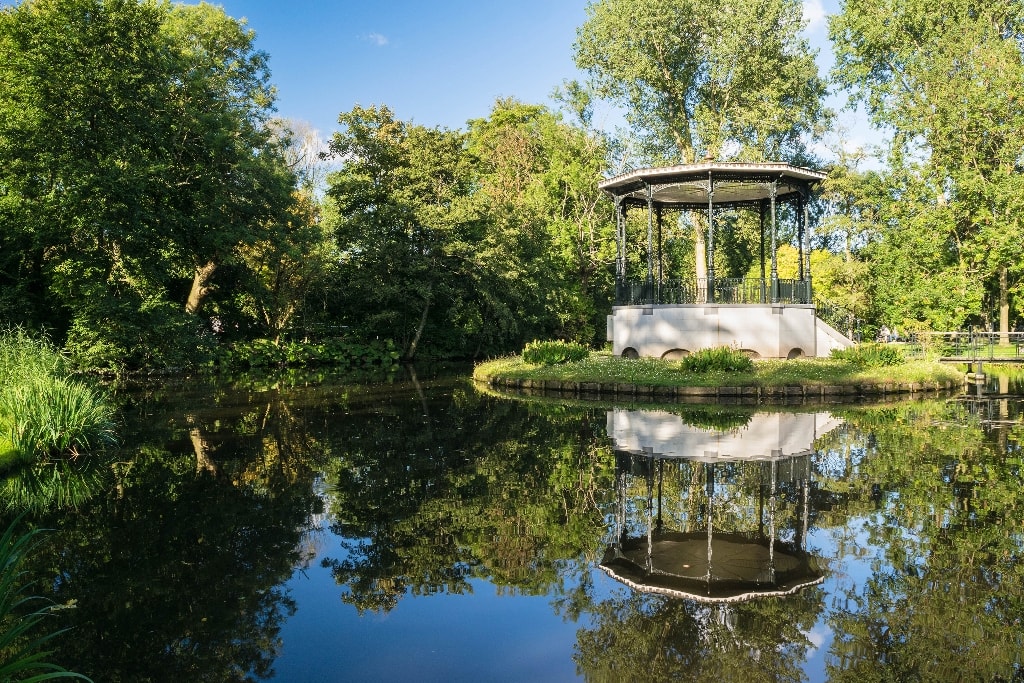
Existing now for almost 150 years, Vondelpark is the largest park in Amsterdam and the most famous park in the Netherlands. As well as hosting open-air concerts, people also have the chance to visit the three-meter statue of Dutch poet Vondel, the rose garden, and the music dome.
Vondelpark is also home to a selection of restaurants and cafes like Café Vertigo and Groot Melkhuis. You can stroll by leisurely after a visit to the museums as it is close by, or explore it the Dutch way – through a bike tour.
If you are in Amsterdam between mid-March to mid-May and you love gardens you might want to visit the Keukenhof Garden and see the tulips in bloom.
Click here for more information and to book your skip-the-line tickets to Keukenhof Gardens.
Restaurant Tip: A great place to grab lunch in the area is the Uptown Meat Club. It has a nice menu, great beers, and good service. It is close to the museuns and Vondelpark. Van Baerlestraat 7, Museumkwartier
If you are interested in a day trip from Amsterdam, Bruges in Belgium is a great idea.
Canal Boat Tour
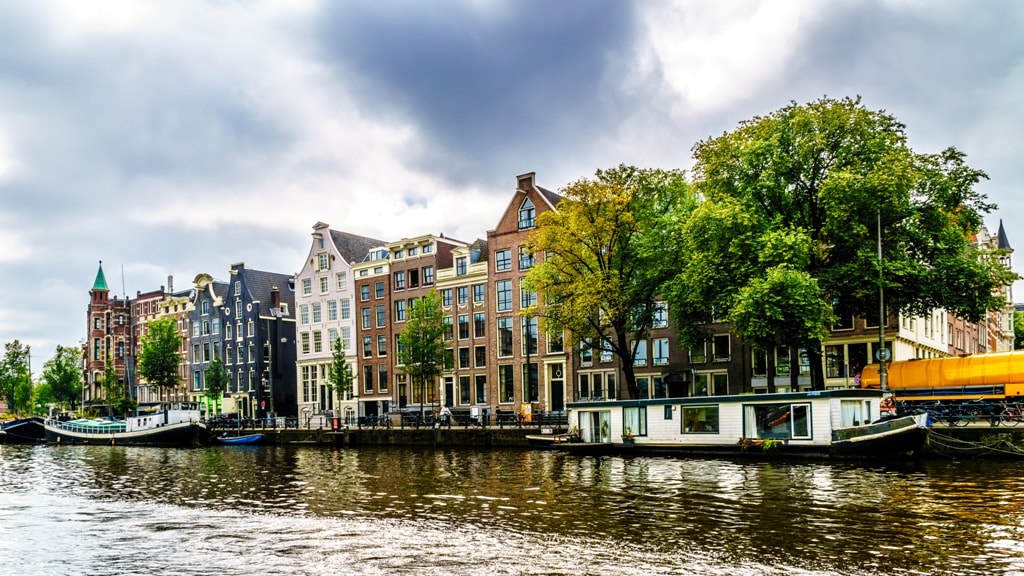
Perhaps the most marked characteristic of Amsterdam is its 165 canals. Recognized as a UNESCO World Heritage site in 2010, it was originally intended to encourage trade and transport and today provides a way for travelers to take in the city’s sights and attractions in an unforgettable way.
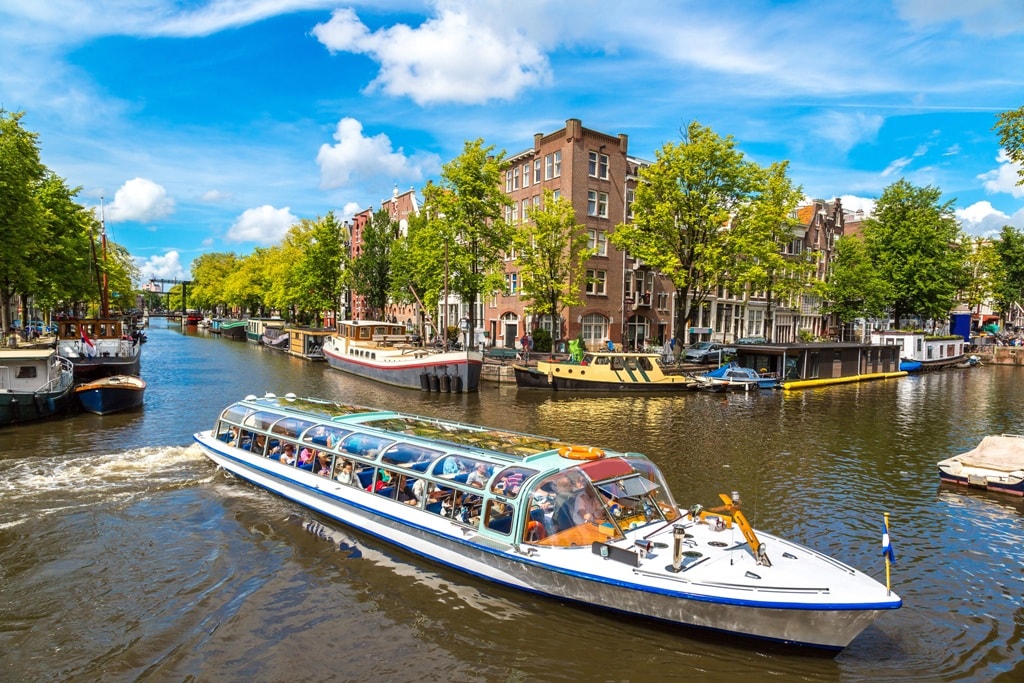
You can take a canal cruise from one of the many tours that operate on the canal, and they usually take one hour. As well as the opportunity to learn more about the facts and history of the canals, you also have the chance to pick which type of tour will suit you best; they range from candle-lit cruises to hop-on-hop-off services.
Some great Canal Cruises:
If the weather is nice the best option is the 75-Minute Open Boat Canal Cruise
Another great option is the 1.5-Hour Evening Canal Cruise
The classic day canal cruise
Red Light District
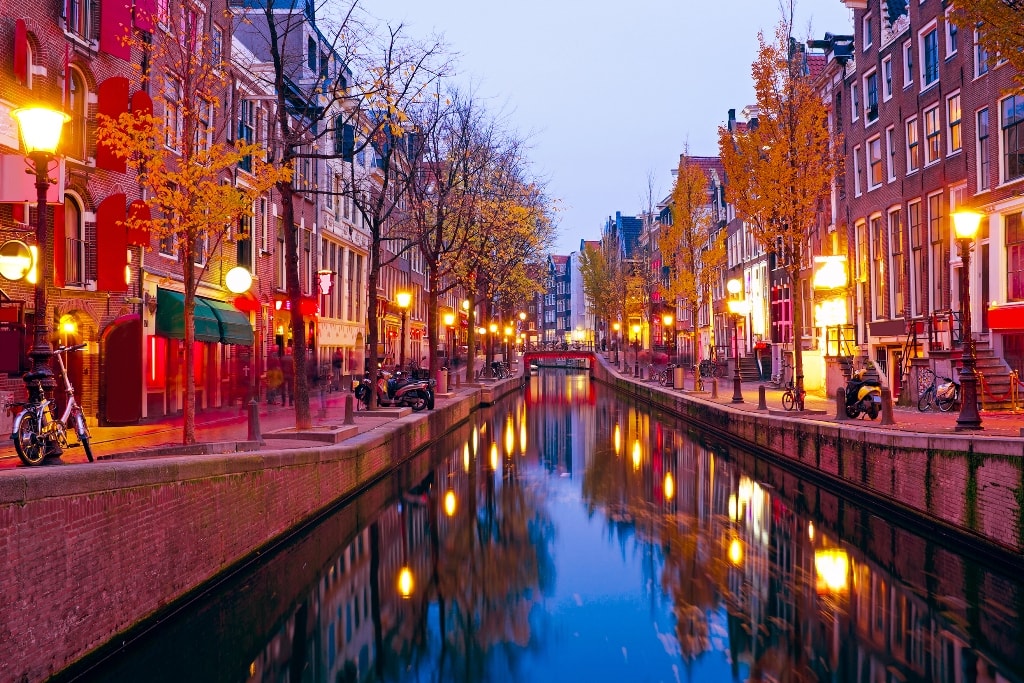
Situated in one of the oldest and most beautiful parts of the city, the infamous Red Light District, also known as Rosse Buurt to the locals, is a network of brothels, sex shops, peep shows, coffee houses, and museums.
The main Red Light District is in the Walletjes area, and while it may look dodgy on the outside, it is well-protected with police and private bodyguards patrolling it. It may be interesting to know that prostitution is legal in Holland and that it is at the heart of Amsterdam’s nightlife entertainment that they get to enjoy acceptance.
Visit this district from 11 pm onwards, either in a group or in a guided tour, to get the full experience of swarming crowds and blaring neon lights reflecting in the canals.
Tip: Taking photos of the ladies in the windows is not allowed.
Amsterdam in 2 days: Day Two
Anne Frank House
Dedicated to Jewish wartime diarist Anne Frank, this museum is for those wishing to gain a fascinating insight into the life and times of Anne Frank during World War II when she and her family hid in a canal house for more than two years. It was opened in 1960 and, along with being able to see the Secret Annex, people can learn more about the persecution and discrimination of Jews during the war through a showcasing of exhibitions.
Film images, historical documents, photographs, and Anne Frank’s diary are all on display and help paint a moving picture of what it was like for her and her family during the war. Behind the Van Gogh Museum and Rijksmuseum, the Anne Frank House is the third most visited museum in the Netherlands. Find more information about the museum here.
Jordaan Neighborhood
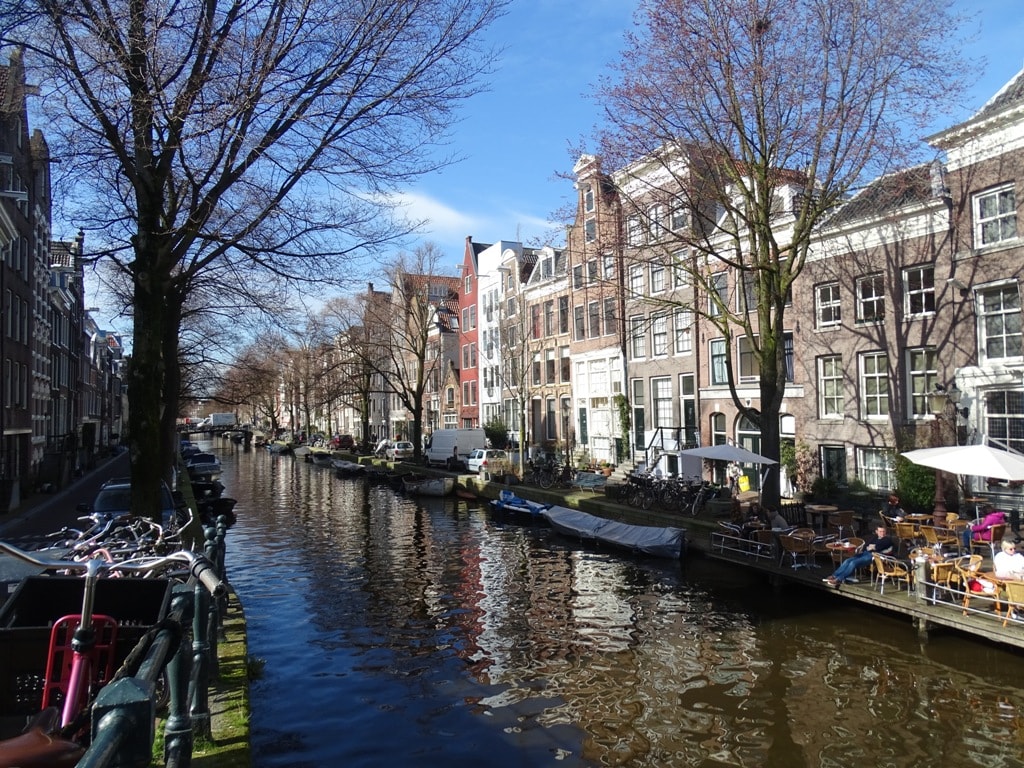
Arguably the most famous neighborhood in Amsterdam is Jordaan. Once a poor district for the working class, years of gentrification means it is now home to a host of young artists, students, and entrepreneurs as well as galleries, restaurants, and boutiques.
Its charming narrows streets and little canals make walking through this neighborhood highly enjoyable; as well as hosting several markets like Noordermarkt which has a flea market on Monday mornings, Jordaan offers hidden courtyards, art studios, and small museums.
It was also once home to several significant figures in history like famous Dutch writer Joost van den Vondel, painter, and photographer Breitner, and artist Rembrandt van Rijn.
Dam Square (National Monument)
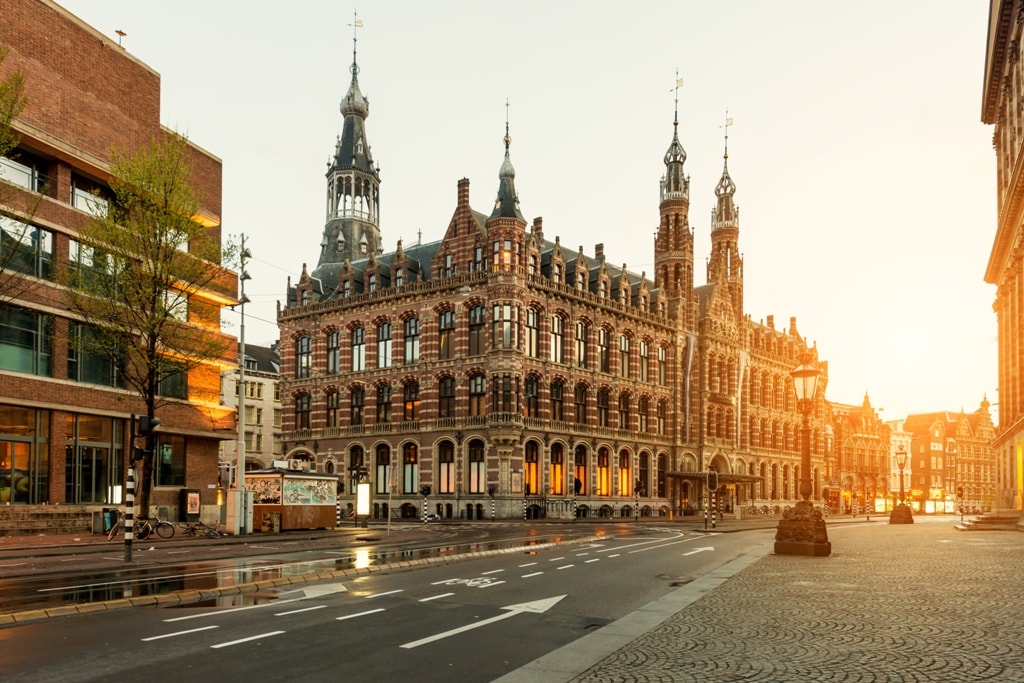
Situated in the middle of Dam Square is the National Monument, Netherland’s most important World War II memorial. It stands at 22-meters high and every year on the 4th of May, a national Remembrance of the Dead is held at this monument where people gather to pay respects to fallen soldiers.
There is a Latin inscription on the pillar which translates in English: “Here, where the heart of the fatherland is, may this monument, which citizens carry in their heart, gaze at God’s stars.” It was designed by Dutch architect J.J.P. Oud and became an official national heritage monument in 2009.
Royal Palace of Amsterdam
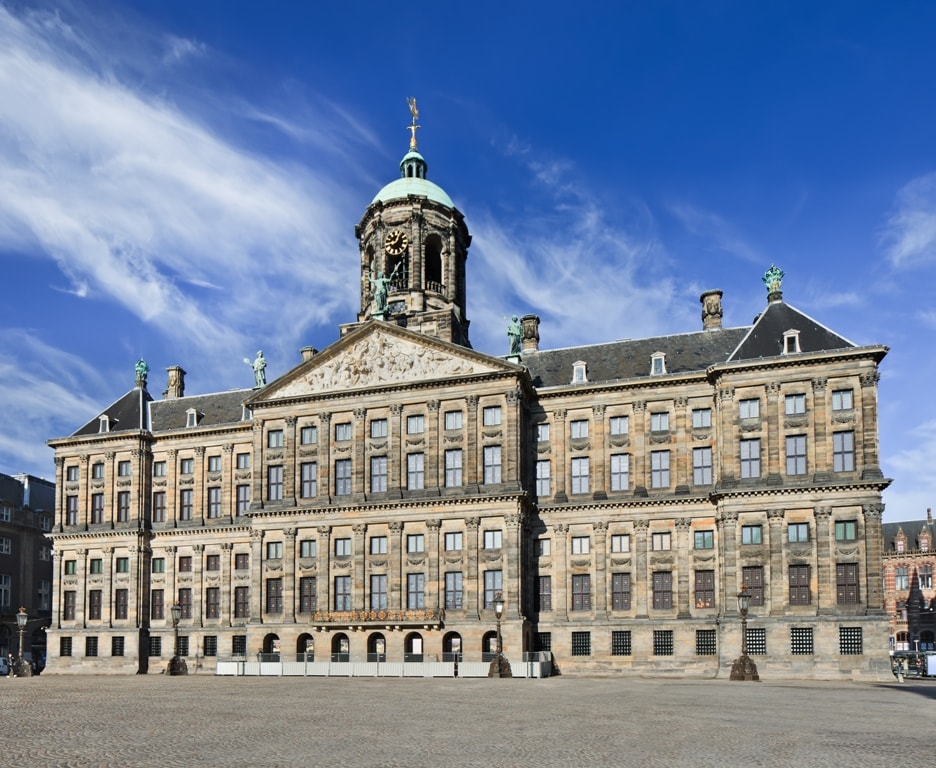
One of three palaces in the Netherlands, the Royal Palace was originally built as a city hall and became the palace of King Louis Napoleon, and later on of the Dutch Royal House.
The State placed the Royal Palace at the disposal of the King and today it is now used for royal events such as prize-givings, the King’s New Year reception, and the welcoming of foreign heads of state. It is situated on Dam Square, in the very heart of Amsterdam. You can take a guided tour throughout the palace’s rooms or take a free audio tour.
Begijnhof
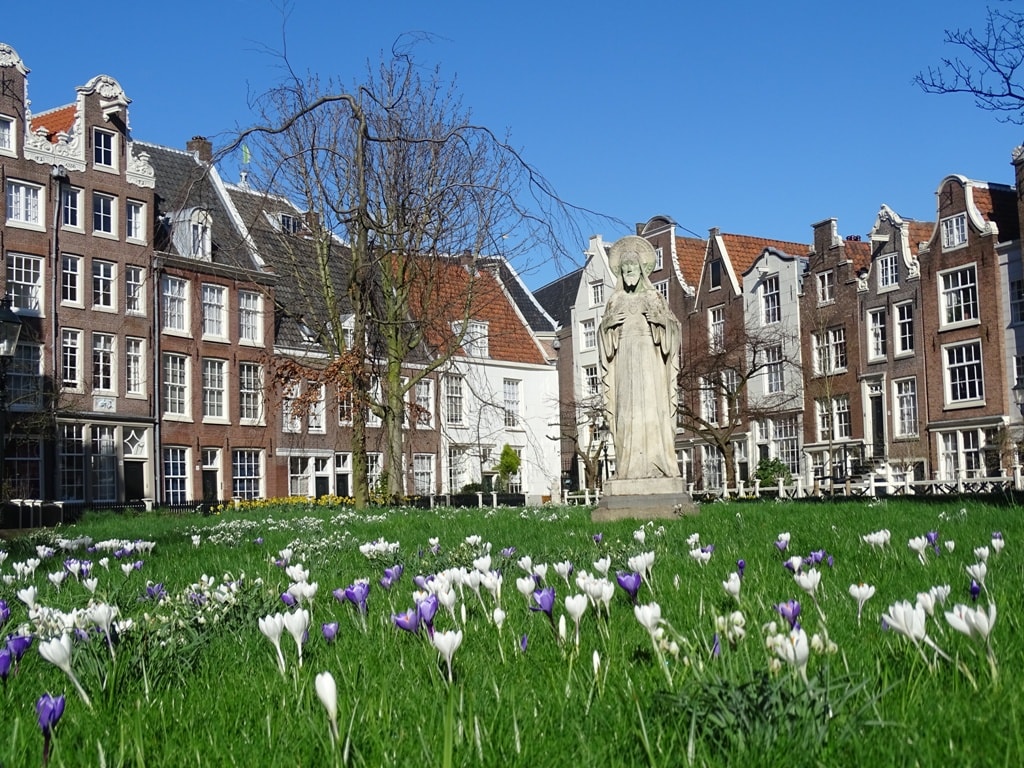
Dating back to the 14th century, this tranquil and enclosed courtyard was originally intended for the Begijntjes, a nun-like Catholic sisterhood. There are beautiful houses surrounding the courtyard and gardens where you will also find the English Church with its original medieval tower, the Begijnhof Chapel, and the Civic Guards Gallery where there is a selection of 17th-century paintings of important men and women from Amsterdam. The wooden house, HoutenHuys, is the oldest surviving house in the city and dates back to 1420.
Oude Kerk
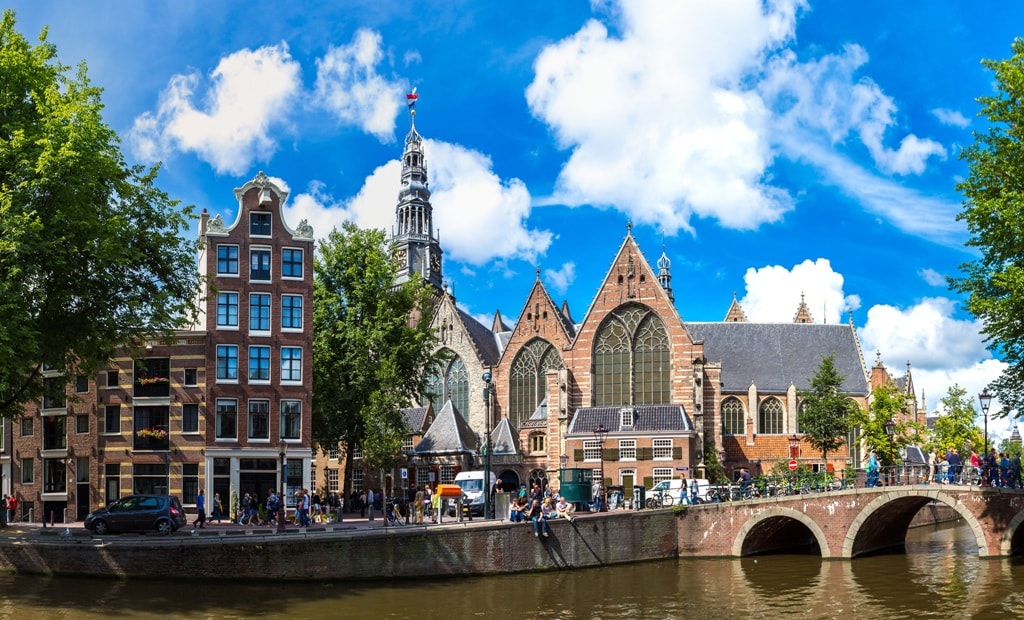
The Oude Kerk (old church) is both Amsterdam’s oldest building and parish church. It is a 13th century, 800-year-old building towering over the Red Light District, oddly enough.
Originally built as a Catholic place of worship, it now is an expression of Dutch Protestantism and frequently hosts exhibitions and concerts. Inside, the architecture is impressive and beautiful and the windows high and flooded through with light.
Other points of attraction inside are Madam Saskia van Uylenberg’s grave (number 29), Rembrandt’s beloved wife who was buried there, and a 17th-century grand organ. It is typically open seven days a week and you can take guided tours which leave every 30 minutes.
Nieuwe Kerk
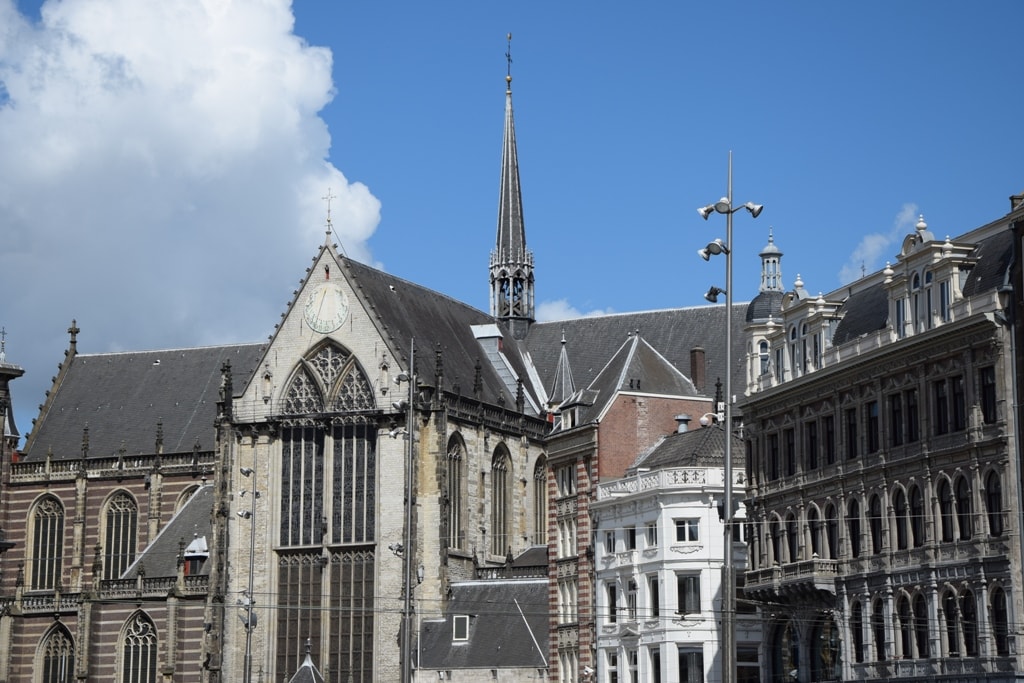
The Nieuwe Kerk (new church) is the most important church in the Netherlands. Built in the 15th century, it lies adjacent to the Royal Palace and is used today as an exhibition space. After fire damage many years ago, it was restored to exhibit its original Renaissance features.
Many Dutch monarchs have been inaugurated in NieuweKerk, and it was even a host to the wedding of His Majesty King of the Netherlands Willem-Alexander and princess Máxima. Inside is also the tomb of Dutch admiral Michiel de Ruyter and poet and playwright Joost van den Vondel, amongst others. It opens daily apart from Christmas and New Year’s Day.
Kalverstraat
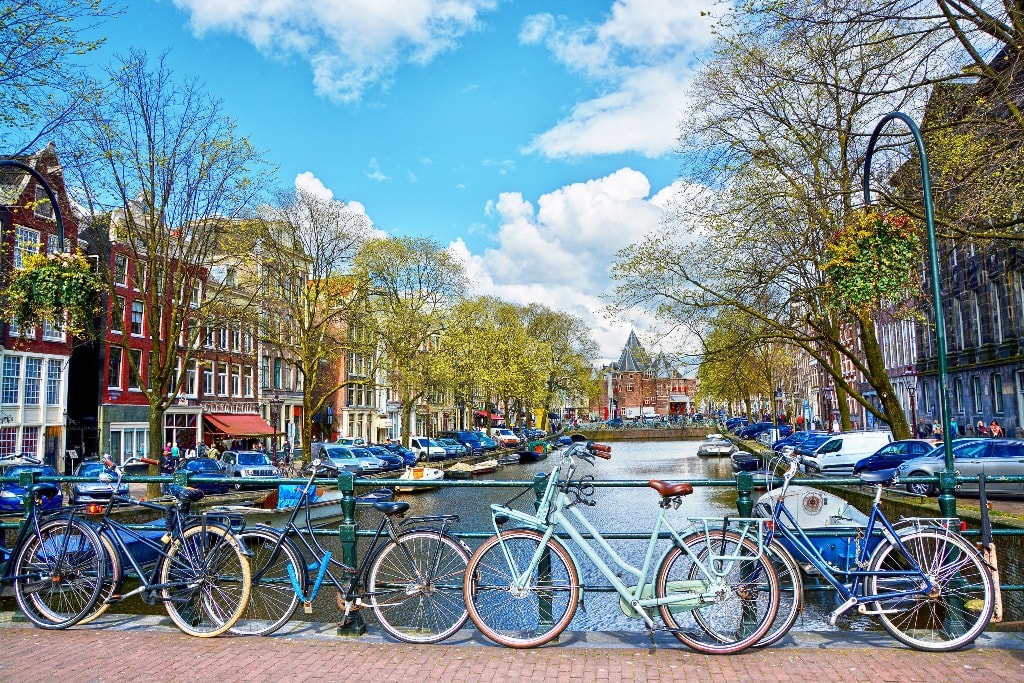
A bustling shopping attraction in Amsterdam, Kalverstraat is a 750-meter road that lures crowds of people to make it the city’s most commercial street. Major brands will have at least one store here, and you will also find boutiques, department stores, shoe shops, and souvenir stores as well.
Near the end of the street is Kalvertoren Building, a historic building turned modern mall occupying three levels. At the very end of Kalverstraat, if you walk through theMunttoren (Mint Tower), you will arrive at Amsterdam’s vibrant Flowermarketwhere you will find all kinds of tulips, bulbs, and flowers.
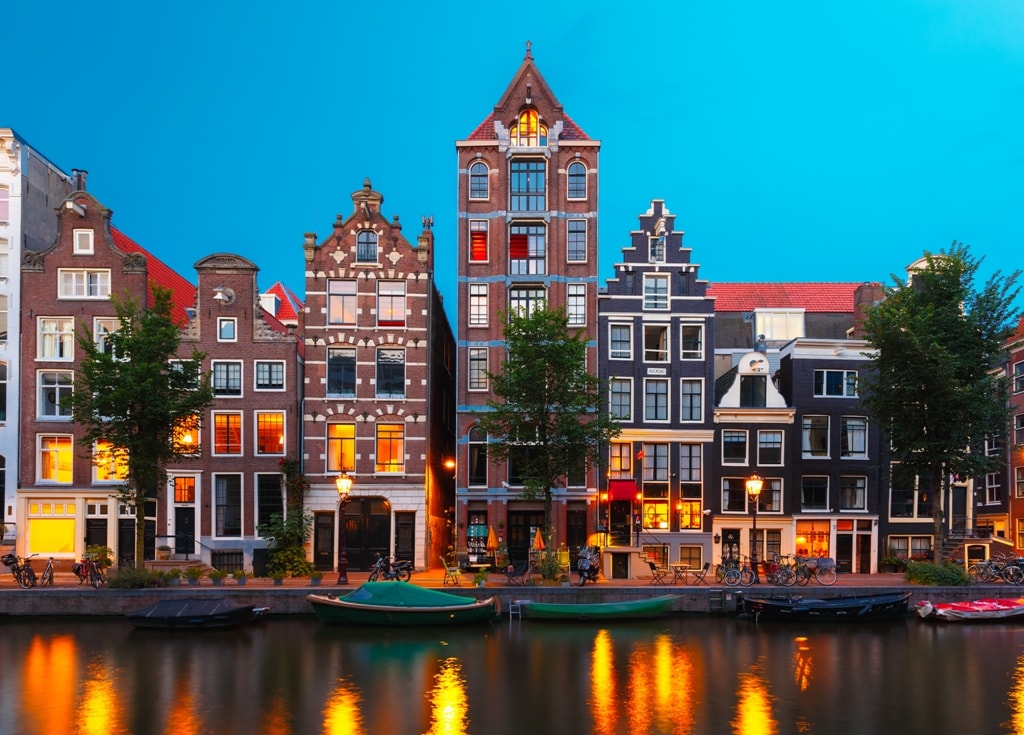
Practical tips for your 2-day Amsterdam Itinerary
When is the best time to visit Amsterdam?
Visit in the Spring (April-May) to avoid the worst of the rain or Autumn (September-October) if you want to avoid Summer crowds. If crowds (and high accommodation prices) don’t bother you and you want to enjoy the best weather then visit between June-August.
A Winter break shouldn’t be overlooked either, especially in December when the Christmas festivities start and you can enjoy the Amsterdam Light Festival.
How to get to and from the airport
Train: Dutch railway operates a direct train from Schipol Airport to Amsterdam Central Station (otherwise known as Amsterdam CS) every 5-10 minutes between 06:00-01:00 and every 60 minutes between 02:00-05:00 with the option to choose first class or second class and there’s plenty of luggage space. Price: €5.50 2nd class Duration: 17minutes
Bus: A red express bus, no. 397 (previously 197) operated by the company Connexxion, runs between the airport and the city center making stops at Stadionplein, Museumplein, Leidseplein and terminates at Amsterdam Elandsgracht bus station. The bus runs every 15 minutes between 05:00-00:30 and a night service (N97) takes over every hour (on the hour) between 01:00-05:00. Price: €6.50 Duration: 35 minutes
Taxi: Taxi has a flat rate fee when traveling between the airport and the city center although there are surcharges for luggage, late-night journeys, and traveling on public holidays. They accept debit/credit cards as well as cash. Price: €39 Duration: 15-20 minutes
Private Transfer: Pre-book with Welcome Transfers online ahead of traveling, at which point you can also order child car seats and travel extras, and a friendly English-speaking driver will be waiting outside of arrivals for you holding a card with your name. Price: €39 Duration: 15-20 minutes. Click here for more information and to book your private transfer.
How to get around Amsterdam
Amsterdam is easy to walk around since it’s flat and compact – just watch out for the cyclists behind you before you make a move to cross the street! Talking of cyclists, you could rent a bike and move around the city like the locals do, just be aware that you have to return the bike within opening hours so that’s usually before 6 pm.
If you want to conserve your time as well as your energy, make use of public transport. The tram is a great way to see the city and you’re sure to enjoy moving around by boat too but you’ll also find an extensive bus and train network plus a metro.
Cash is not accepted on trams or buses so if you think you’ll move around by public transport a lot, invest in an OV-chip card which you can use on the tram, bus, and metro by loading single 1-hour tickets onto it or get the touristic I Amsterdam city card for unlimited travel (24hr, 48hr, or 72hr tickets available) on the GVB public transport system which covers the tram, metro, bus, train, and ferry with the added benefit of free or reduced entry to the city’s top attractions.
Amsterdam is a thriving cultural hub, home to important world-famous museums, historical sites, and a lively nightlife district. There is much to see and do for locals and tourists alike, and although it ticks all the advantages of a big city, it still maintains a quiet and relaxed vibe partly due to good transport and its extensive canals taking the weight off of road traffic. A visit to Europe is not complete without stopping over for at least two days in this beautiful little capital.
Have you been to Amsterdam?
Did you like this post? Pin it!
